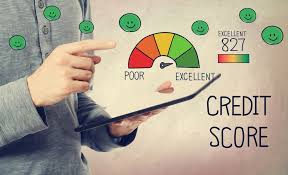
Your credit score is more than just a number—it’s a key indicator of your financial health and plays a crucial role in how you go about managing debt smartly. Understanding your credit score, how it impacts your borrowing options, and what you can do to improve it is essential for being debt smart.
What Is a Credit Score?
A credit score is a numerical representation of your creditworthiness, typically ranging from 300 to 850. It’s calculated based on your financial behaviors, such as how you manage credit cards, loans, and other debts. Lenders use this score to evaluate the risk of lending to you.
The factors influencing your credit score include:
- Payment History (35%): Timely payments are the most significant factor. Late or missed payments can lower your score.
- Credit Utilization (30%): This measures how much of your available credit you’re using. High utilization can signal financial strain.
- Credit History Length (15%): A longer credit history demonstrates your ability to manage debt over time.
- Credit Mix (10%): Having a variety of credit types (e.g., credit cards, loans) can boost your score.
- New Credit Inquiries (10%): Frequent applications for new credit can lower your score temporarily.
Why Is Your Credit Score Important for Debt Management?
- Determines Borrowing Costs
A higher credit score often qualifies you for lower interest rates on loans and credit cards, reducing the overall cost of borrowing. For example, a person with excellent credit may secure a mortgage rate that saves thousands of dollars over the loan’s term compared to someone with poor credit. - Affects Loan Approval
Lenders use your credit score to decide whether to approve your application. A low score can result in loan denials or higher down payment requirements. - Impacts Debt Consolidation Options
If you’re considering consolidating debts, a strong credit score can help you qualify for favorable terms, such as lower interest rates on personal loans or balance transfer credit cards. - Influences Emergency Borrowing
Unexpected expenses can force you to rely on credit. A good credit score ensures you can access financial support when you need it without exorbitant costs.
Tips to Maintain or Improve Your Credit Score
- Pay Bills on Time
Set up automatic payments or reminders to avoid late payments, which can significantly impact your score. - Keep Credit Utilization Low
Aim to use less than 30% of your available credit. For instance, if your credit limit is $10,000, try to keep your balance below $3,000. - Avoid Opening Too Many New Accounts
While new credit can diversify your credit mix, too many inquiries in a short period can harm your score. - Monitor Your Credit Report
Check your credit report regularly to identify errors or signs of fraud. You can access one free credit report per year from each of the three major credit bureaus: Experian, Equifax, and TransUnion. - Pay Down Debt Strategically
Focus on paying off high-interest debt first while making at least the minimum payments on other accounts to prevent late fees. - Keep Old Accounts Open
Closing older credit accounts can shorten your credit history and potentially lower your score. If there’s no annual fee, consider keeping them open.
How Credit Scores Help You Be Debt Smart
By maintaining a strong credit score, you’ll have access to better borrowing opportunities, which can save you money and reduce financial stress. You’ll also have the flexibility to manage your debt strategically, whether by refinancing high-interest loans, consolidating debt, or securing favorable rates for future purchases.
Taking the time to understand and improve your credit score is an investment in your financial future. It’s a critical tool for staying on top of debt and achieving your long-term financial goals.
Final Thoughts
Your credit score is a powerful ally in managing debt smartly. With consistent effort and informed decision-making, you can keep your score healthy, minimize borrowing costs, and create a solid foundation for financial success. Start today by reviewing your credit report and taking steps to improve areas where you can make an impact.
AdvanceWithFinance
Proudly powered by WordPress
Pages






